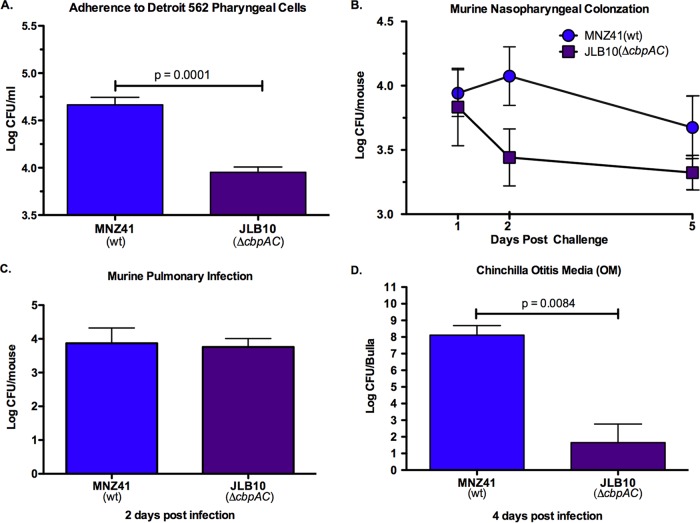FIG 7 .
NESp CbpAC improves adherence to human epithelial cells and virulence during chinchilla OM. (A) Human Detroit 562 pharyngeal epithelial cells were incubated with 107 NESp, and adhered pneumococci were enumerated by plating on BA. Adherence assays were performed in triplicate, and data are representative of two independent studies. (B) Nasal washes and tissue homogenates of C57BL/6 mice (n ≥ 7) intransally challenged with 107 NESp were plated on BA, and bacterial counts were combined to estimate log CFU/mouse at 1, 2, and 5 days postinfection. (C) C57BL/6 mice (n ≥ 6) were intratracheally infected with 107 NESp, and the lungs were collected at 2 days postinfection for bacterial enumeration. (D) Each bulla of chinchillas (n ≥ 4) was injected with 107 NESp, and individual bulla effusion fluid, wash fluid, and homogenate were plated on BA to enumerate bacterial CFU at 4 days postinfection. Effusion, bulla, and wash bacterial counts were pooled for each bulla to estimate log CFU/bulla. CbpAC significantly increased adherence to pharyngeal epithelial cells (A) but was not required for colonization of murine nasopharynx (B) or infection of the lungs (C). (D) Deletion of cbpAC significantly attenuated OM in chinchillas. Error bars denote standard errors of the means.

